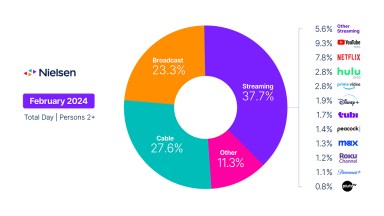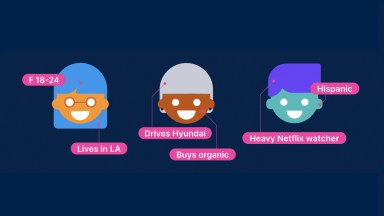Pick a channel, any channel.
With so many to choose from, marketers have their hands full as they weigh the options, allocate their budgets, and then validate their decisions. And as varied as the measurement landscape is today, the challenges will only increase as new channels come to market—unless marketers shift to think more holistically about their measurement.
Marketers aren’t confident in channel-level measurement
Across traditional and digital media, marketers have 15 different channels1 at their disposal. Despite this fragmentation, just under 70% of the global marketers surveyed for the 2023 Nielsen Annual Marketing Report believe they have the right marketing technology to measure the aggregate returns on their investment. The flipside, however, is that their stated confidence in ROI measurement at the individual channel level is much lower—which stands in stark contrast to their full-funnel marketing confidence.
The gap between holistic and channel-level confidence highlights a primary flaw in leveraging channel-specific marketing tools to assess overall marketing effectiveness. Arriving at a single metric for reach and frequency across channels is incredibly difficult, and sentiment from global marketers underscores the inherent complexities, especially across many of the digital channels that marketers are investing more in.
Even when believing in their martech, global marketers acknowledge the problem, with only 54%, on average, expressing confidence in their full-funnel media measurement capabilities (i.e., end-to-end measurement). Confidence is slightly higher in EMEA and slightly lower in Asia-Pacific.
Given the challenges associated with cross-media ROI measurement, such as quality audience data and reduced use of existing marketing technology, 52% of global marketers, on average, are currently solely focused on reach and frequency metrics.
Multiple tools widen process gaps and information silos
To keep up with the growing media options, many marketers report using an array of tools and solutions to measure their campaign performance. This isn’t surprising, but it can complicate the road to holistic measurement. The more tools you work with, the more datasets your systems—and people—have to be ready to ingest. And each one takes time. Add to that the historically different methodologies for linear and digital measurement and it’s clear to see the need and difficulty of arriving at comparable, deduplicated metrics. Globally, 62% of marketers, on average, use multiple measurement tools for their cross-media measurement. Comparatively, just 34% report using one.
Globally, marketers know how important comparable metrics are in understanding the effectiveness of their ad spending. Amid an increasingly rich media landscape that will continue to offer new experiences in the years ahead, marketers should consider tools, solutions and metrics that are media-agnostic to achieve their long-term measurement—and business—objectives. Without a comprehensive view of the audience, marketers won’t have a complete view of campaign performance.
For additional insights, download the 2023 Nielsen Annual Marketing Report.
Note
1 Traditional: Radio, linear TV, print, direct mail, OOH, cinema. Digital: Email, search, social media, podcast, digital display, digital video, OTT/CTV, streaming audio, native ads.



